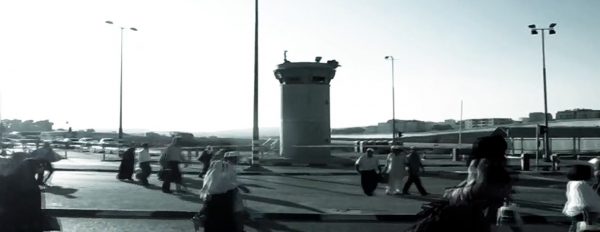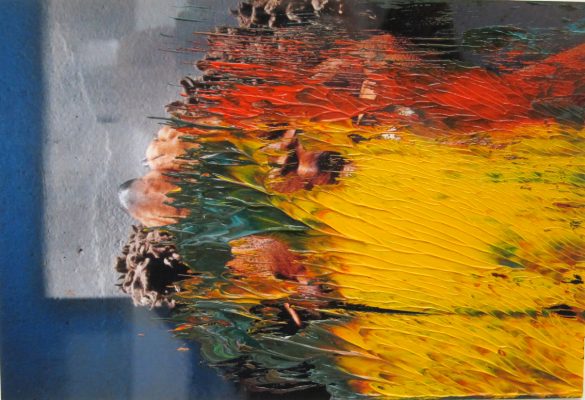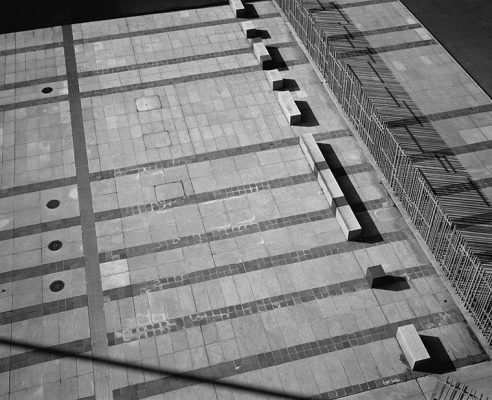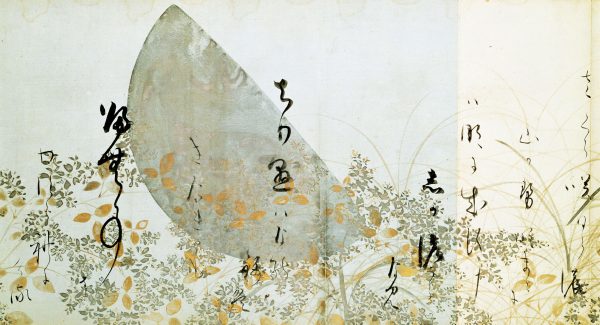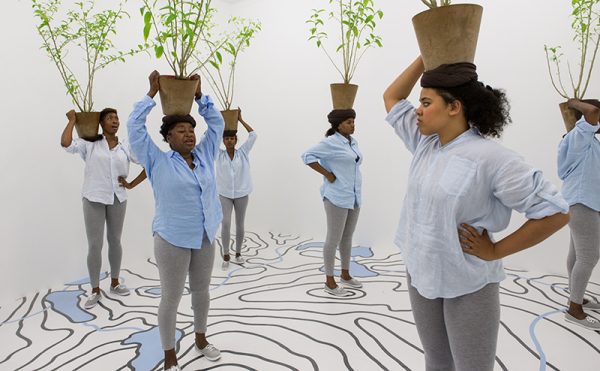The author Philip Pullman recently criticised the overuse of the present tense in contemporary literature, a criticism he stretched to the use of handheld cameras in film. Both made him feel ‘claustrophobic’, he wrote, ‘always pressed up against the immediate’.
Pullman’s article was a little sweeping and you may disagree with some of its conclusions, which suggested that an author’s reliance on the present tense was often the sign of an inability to handle narrative and that, correspondingly, the use of a hand-held camera was no more than a facetious way of achieving a sense of ‘authenticity’. But I think his uneasiness touched upon some broader issues that might be linked not only to the stylistic or formal inadequacies of individual authors and directors but also, via the problematic relation between narrative discourse and historical representation, to our troubled experience of contemporary history.
I am thinking here in particular of those jerky videos which in many ways have defined our perception of the so-called Arab Spring. These highly pixelated, out-of-focus images seem to play upon a convention often associated with the ‘documentary’: the more grainy and imperfect they are, the more they appear to be the signifiers of authenticity. Shot in ‘real time’, these images seem ideologically neutral, the markers of documentary truth, positing a kind of metonymic relation between the representations produced by low-tech recording devices and the experiential truths of the socially disempowered. What we encounter is an inverted epistemological hierarchy where clarity (read ideology) is subordinate to roughness (read truth). The events are recorded as and how they appear. And when we see them no one speaks. The events seem to recount themselves.
Yet the seemingly self-evident correlation between roughness, authenticity and social disempowerment conceals a deeper, more contradictory relation, which the artist Hito Steyerl has termed ‘the uncertainty principle of modern documentarism’. For it is also often the case that the more immediate these forms of documentation become, the more unintelligible they are and the less there is for us to see. Steyerl gives only one example – a fuzzy film shot by an American general with his cell phone during the war in Iraq – but I think it is fair to say that our perception of the Arab Spring is composed in large part of such paradoxical fragments where authenticity and indecipherability go hand in hand: indistinct images of shouting crowds, blurred images of bodies, the garbled sound of gunshot, the sight of running feet.
Which begs the question: what exactly do these images tell us? I am reminded here of a monumental work by Gerhard Richter, a two metre high and twenty metre long painting titled Stroke (on Red) produced in 1980. At first glance a single horizontal stroke of yellow paint on a red background may seem to have little to do with these issues. The work is usually read as a response to the paintings of Barnett Newman, whose vertical lines, often understood to evoke the infinite and the sublime, are countered by a horizontal line that emphasises finitude and materiality. But I think Stroke (on Red) may be read along slightly different, allegorical lines that may prove useful when thinking about these images. Because the magnification of what appears to be a single brushstroke has a paradoxical effect. Seen from a distance it can be taken in as a totality; in this experience there is something of what Roland Barthes termed ‘l’euphorie du panorama’, the kind of euphoria that is felt when, if only for a moment, we are able to take hold of our situation in the wide stroke of history. But when you approach the paintingmagnification loses its privileged status. Seen from up-close up you realise that the wide stroke is in fact composed of what looks like a series of innumerable, smaller strokes. In a reverse movement magnification leads not to a greater clarity of vision but to its atomisation. The panoramic view is lost. Euphoria is replaced by a sense of claustrophobia.
How might this be related to Pullman’s anxieties about the immediacy of the present tense and those fuzzy images of the Arab Spring? Now, the typical view would be to say that a blurred image of a corpse taken by a camera on a mobile phone, for instance, is both depictive and indexical. It not only represents an object but is the index of the presence of a witness who was really there at that moment, in much the same way that a stroke of paint suggests the presence of a painter. Graininess and imperfection only reinforce this sense of authenticity, of thereness. But it is also the case that the line between what we know and how we feel is destabilised when we view such an image. ‘Pressed up against the immediate’, we have trouble disengaging ourselves. We feel uneasy, claustrophobic. And we hesitate. We have no idea who recorded the image, nor do we have any idea of when it was recorded. It is simply present. As in Richter’s painting, our perception of the magnified index seems to block the unfolding of a narrative logic that might include past and future. It is as if the immediate representation of an event led not to clarity but to a point of blindness in the visual field, to a kind of abstraction. This, when the image appears to be a straightforward, figurative document of the event itself: a stroke of paint or a corpse.
In his book The Content of the Form, the historian Hayden White noted the difficulty of sustaining historical discourse in times of social and cultural breakdown. He used the example of the Annals of Saint Gall, a list of events that occurred in Gaul during the eighth, ninth, and tenth centuries of our era, a period characterised by strife and uncertainty. Here are the entries cited by White for the period 712-31:
712. Flood everywhere
713.
714.
715.
716.
717.
718. Charles devastated the Saxon with great destruction.
719.
720. Charles fought against the Saxons.
721. Theudo drove the Saracens out of Aquitaine.
722. Great crops.
723.
724.
725. Saracens came for the first time.
726.
727.
728.
729.
730.
731. Blessed Bede, the presbyter, died.
For White this list is suggestive of the precarious form of life experienced during the Middle Ages. But this precariousness is expressed not so much in the list’s content, which mentions war, natural disaster and death but leaves all these events unexplained, as if social events were as inexplicable as natural ones, as it is in the fragmentary quality of its form, which expresses an inability to order these vertical markers into the elements of a horizontal process, a narrative (this would be the ‘content of the form’). As White put it, ‘[w]hat is lacking in the list of events (…) is a notion of a social center by which to locate them with respect to one another. (…) And it is the absence of such a center that precludes or undercuts any impulse [the annalist] might have had to work up his discourse into the form of a narrative.’ The annalist knows what he is unable to tell.
I cannot do justice to the intricacies of White’s discussion here. But what he calls the absence of a social centre may also form an important part of the blurred, pixelated photographs and videos of the Arab Spring. As with the Annals, in these visual documents there is no beginning, middle and end, no identifiable narrative voice, no sense of narrative closure. They begin and end in medias res. And however semantically ‘full’ they appear (especially in the case of a corpse), they are constructed on the basis of a set of events that might have been included but were – perhaps because of the dangers of the moment, but perhaps not; perhaps because of the inadequacies of the person handling the recording device, but, again, perhaps not – left out. What you see, in other words, gains its meaning through nothing other than its having been recorded. The image does not document an intrinsically meaningful event; rather, the document endows an event with meaning through the very act of recording.
It is this, among other things, that makes it difficult to identify the image as part of an integrated whole. Put differently, the perception of the index is at one with its abstraction. But the image is not abstracted in the conventional sense of being non-representational or non-figurative. On the contrary, like the elements that comprise the list in the Annals, like Richter’s smaller strokes, the images are referential, indexical, sometimes overfull with meaning. But if they are full they are also curiously empty. And if they are figurative they are also curiously abstract.
I do not offer these brief reflections on the relation between figuration and abstraction in order to cast doubt on the credibility of these images tout court. I would simply like to suggest that we encounter an interesting inversion of what is usually thought of as realism. The failure of these fragmented, blurred and shaky images to narrativize reality in an adequate way need not be a mark of their unreality. (We should, however, be weary of how we respond to their sometimes highly affective content. Moral indignation turns on the Good vs. Evil axis, a binary that belongs to fantasy – a Philip Pullman novel, for instance – not to history.) Instead, one might say that their failure demonstrates, ‘realistically’, the difficulties we have when trying to capture something that does not lend itself to representation in the narrative mode. In other words, these images gain their truth-content not only from their subject-matter, which is often indecipherable, but from the content of their form.
So perhaps Pullman was right, albeit for the wrong reasons. For the recurrent use of the present tense in contemporary literature (which some have traced to the ‘white heat’ of technological developments under Harold Wilson in the 1960s) as well as the use of handheld cameras in cinema (whose history can be traced, perhaps unsurprisingly, to the cinema vérité of the same period) has little to do with the incapacity of authors or directors per se. Rather, the refusal or inability to move beyond the present tense is perhaps a symptom of a moment when there is no ‘social center’, when society is atomised, when past and future seem to have collapsed into a perpetual and claustrophobic now. The challenge today, then, lies in transforming these discourses into the form of a narrative, in attempting to situate historically the dizzying dynamics of our contemporary moment. The difficulty we have in formulating such a narrative is, in a real sense, its history.
